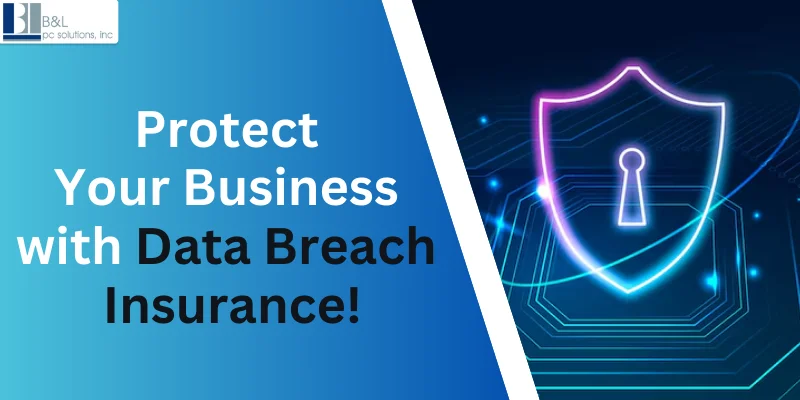
Envision waking up one fine day and realizing someone had hacked into the operating systems of your company, stealing the database containing sensitive information regarding customers. The hacker will disclose this sensitive client information and subsequently ask for a ransom to prevent this. These are cases that thousands upon thousands of businesses face year in and year out, painting such realistic pictures as contributing to that proverbial dark cloud that yet seems to characterize the times.
By 2024, cyber threats will have grown, showing in ransomware-leveraging
Criminals and phishing scams trouble the business world, with the conditions caused by insider threats.
For small and medium enterprises (SMEs), a single data breach could result in near extinction, bringing immeasurable financial losses, consequences such as lawsuits, and a black mark on their reputation that could take years to revive.
| Statistic | Value | Source |
|---|---|---|
| Global Average Cost of a Data Breach | $4.88 million | IBM's 2024 Cost of a Data Breach Report (ibm.com) |
| Decrease in Ransomware Payments | 35% | Chainalysis Report (wired.com) |
| Total Ransomware Payments in 2024 | $814 million | Chainalysis Report (wired.com) |
| Largest Healthcare Data Breach | 100 million records | HIPAA Journal (hipaajournal.com) |
| Increase in Data Breaches (2021 to 2024) | 70% | Identity Theft Resource Center (time.com) |
| Average Time to Identify a Data Breach | 194 days | IBM's 2024 Cost of a Data Breach Report (ibm.com) |
| Average Time to Contain a Data Breach | 64 days | IBM's 2024 Cost of a Data Breach Report (ibm.com) |
| Percentage of Breaches Involving Shadow Data | 33% | IBM's 2024 Cost of a Data Breach Report (ibm.com) |
| Average Cost Savings with Extensive Security AI and Automation | $2.22 million | IBM's 2024 Cost of a Data Breach Report (ibm.com) |
This is where data breach insurance comes in. With businesses digitizing operations and storing enormous amounts of customer information, it is not just an option to have a safety net but a necessity.
In this blog post, I will explore what data breach insurance entails and why it is pertinent to SMEs. Subsequently, I will look into what it can do to protect the business against the far-reaching effects of a cyber attack.
Insight About Data Breach Insurance
Data-breach insurance is a custom-designed class of insurance that mitigates the financial and operational effects of a breach in cybersecurity. It covers many expenses, including data recovery, legal fees, regulator fines, and public relations efforts to reinstate customer trust.
The Salient Features Of Having Data Breach Insurance
- Legal Compliance Assistance: Covers regulatory investigations and legal proceedings costs.
- Customer Alert & Credit Monitoring: Offers informing persons concerned and credit monitoring provisions to lower the risk of fraud.
- Forensic Investigation: The costs of hiring a business forensic expert or expert agencies to the full extent of how this breach came to be will be covered in the forensic investigation statement Expenses Summary.
- Loss of Business: This covers revenue loss due to downtime caused by cyber-attacks and all related effects.
- Cyber Extortion Protection: Covers ransom payments, if any, paid to hackers based on their demands to withhold confidential information or failing to pay or release information.
Example: A small law firm in New York was attacked by ransomware last year and had all its files locked up so that clients could not access them. Without data breach insurance, $200,000 was spent on out-of-pocket ransom, legal fees, and data recovery expenses, almost bankrupting the firm.
Types of Data Breaches
One must know all data breach types, which will help organizations find ways to prevent them.
1. Hacking and IT Incidents: Cybercriminals exploit a company's security weaknesses to steal data.
Example: The 2024 Ticketmaster breach will expose about 560 million customer records due to cloud misconfiguration.
2. Insider Threats: Employees or contractors purposely or inadvertently release sensitive information.
Example: an employee of a financial company inadvertently sent 10,000 client records outside the company violating compliance laws.
3. Physical Theft: An incident that may involve the loss of sensitive data devices, such as laptops, USB drives, or external hard drives.
Example: $1 million in fines for failing to comply with data protection laws due to losing a company laptop.
4. Social Engineering Attacks (Phishing, Smishing, and pretexting): The perpetrators impersonate employees to acquire confidential information.
Example: In 2024, a CEO impersonation phishing attempt caused employees to transfer $2 million into the account maintained by the fake company.
Read More Blogs: How Can You Protect Your Home Computer From Cyber Threats?
Requirements to Obtain Data Breach Insurance
Insurance companies must comply with specific prescribed cybersecurity requirements to afford coverage. It confirms that organizations continue to ensure proactive mitigation of risk exposure.
-
Multi-factor authentication: MFA is another layer of login security against unauthorized access.
-
Regular Employee Cybersecurity Training: Train employees to identify phishing emails, scams, and cybersecurity best practices.
-
Endpoint Security & Firewalls: Protection of business networks against unauthorized access.
-
Data Encryption & Backup Policies: To ensure sensitive data is stored securely and can be restored in case of a breach.
-
Incident Response Plan: A systematic approach to prepare, recognize, manage, and mitigate incidents arising from attack-related actions.
Insider Tip: Cybersecurity steps can help support your business's security perimeter and reduce insurance premiums.
What Does Data Breach Insurance Cover?
Data breach insurance provides comprehensive coverage against various financial or legal exposure avenues. For example, it would go on to cover:
-
Cover Legal Fees & Compliance Costs: Legal costs, penalties imposed by regulatory authorities, and expenses from compliance breaches.
-
Data Recovery & System Restoration: It will cover costs incurred in restoring data that could be stolen or lost.
-
Customer Notification and Identity Protection Services: This section of the insurance pays for notifying involved customers about their incidents and subscribing to credit monitoring services.
-
Business Interruption Losses: Will pay the lost revenue incurred because of the downtime caused by the breach.
-
Cyber Extortion and Ransomware Payments: For services related to ransom payments or negotiations with cybercriminals.
Example: One retail chain in Florida suffered a colossal POS malware attack that exposed thousands of customers' credit card details; data breach insurance took care of forensic investigations, legal defense, and customer notification costs, thus saving them from potential financial doom.
The Importance of Data Breach Insurance for SMEs
Right now, small and medium enterprises are becoming the main targets of cyber criminals because they can only afford limited cybersecurity resources. A study shows that 43% of all cyberattacks are now directed at small businesses, while only 14% are ready to fend off such attacks.
Why SMEs Need Data Breach Insurance
-
SME IT Resources are limited: Most do not have dedicated IT security teams, making them easy targets.
-
High Recovery Costs: The costs involved in breach recovery could turn off a small business.
-
Regulatory Compliance: Breach of data protection laws attracts heavy penalties.
-
Loss of Customer Trust: It can permanently damage your brand's reputation. 5- Growing Cyber Threat Landscape: They constantly evolve, increasing an attack's chances.
Read More Blog : What is Cybersecurity? Types, Solutions and Importance
Conclusion
Anyone entering the new age will discover that this age is almost ending; with cyber threats at such advanced levels, data breach insurance is no folly but a stern necessity. Every business entity should think about data breach insurance for financial resilience if a data breach occurs. Not to forget that leaving such steps undone could lead to destruction due to heavy financial losses, legal consequences, and irretrievable damage to a company's reputation.
In partnership with strong cybersecurity measures, data breach insurance can assure your business that it can operate freely, knowing you have equipped yourself for the worst outcome. You do not need to take a crash policy on data breach insurance after the worst has already happened. Taking proactive measures to secure the enterprise even from cybersecurity threats is better.
Frequently Asked Questions For Data Breach Insurance
Q1: Is it different from cyber liability insurance?
Yes. Data breach insurance usually involves the theft and loss of confidential data. On the contrary, coverage minus losses from a hack can be encompassing as it includes cyber extortion and network security failures.
Q2: Are fines and penalties included in the data breach insurance?
Some policies cover such regulatory fines, but this depends on the insurer's terms and any applicable local laws. It is wise to check your policy.
Q3: What should businesses do to lower the price of data breach insurance?
Implementing strong cyber-security measures, such as MFA, staff training, and data encryption, reduces risk and, in turn, costs for businesses.
Q4: Is data breach insurance mandatory under law for businesses?
Data breach insurance is not required by law, though specific industries such as finance and health must be covered because of regulation.
Q5: What is the first thing you do in a data breach?
Immediately activates your incident response plan, notifies affected parties, and contacts its insurance company for legal and financial advice.
Contact B&L PC Solutions for a free consultation and expert cybersecurity services on Long Island to secure your business from allied threats.
Tags: business protection 2025, cyber insurance, Cybersecurity Insurance, data breach coverage, Data Breach Insurance, data breach protection, legal compliance insurance, ransomware protection, small business security, SMEs cybersecurity





